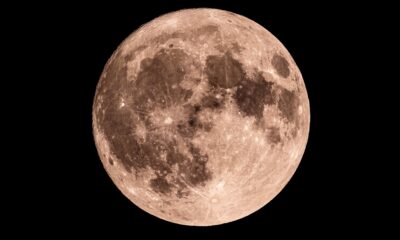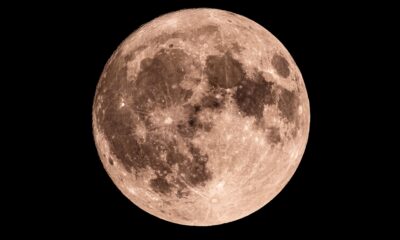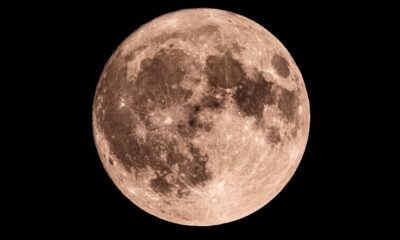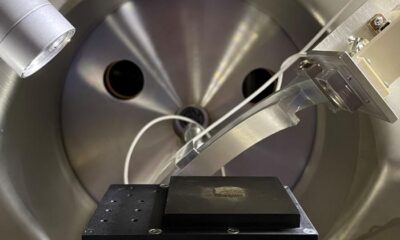Science
UCF Researchers Tackle Lunar Dust Challenges for Moon Missions
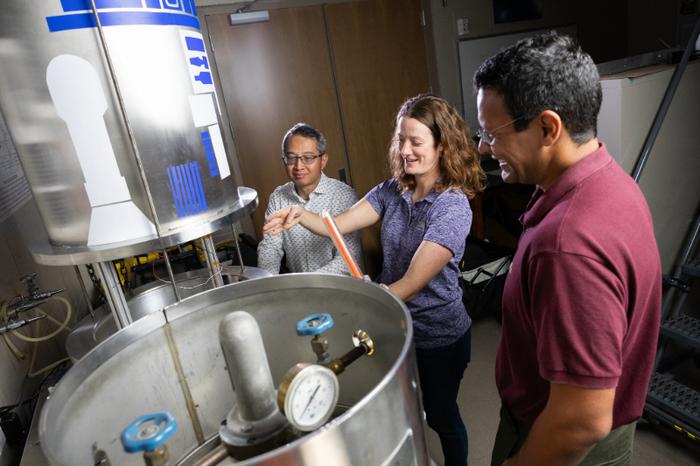
Efforts to establish a sustainable human presence on the Moon face a significant challenge: lunar dust. Researchers from the University of Central Florida (UCF) are taking a collaborative approach to develop innovative solutions aimed at mitigating the impact of this abrasive material. Their work combines expertise from multiple disciplines to create a protective coating designed to prevent lunar dust from adhering to vital equipment and surfaces, ensuring safer exploration for astronauts.
Lunar dust poses unique problems compared to terrestrial dust. Its sharp and charged particles cling to surfaces, including sensitive materials and biological tissues. The UCF team, consisting of four specialized groups, is focused on creating a coating that can either repel lunar dust or facilitate its easy removal through air sprays or gentle shaking. This innovative approach aims to enhance the durability and functionality of equipment used in lunar missions.
At the forefront of this initiative is Dr. Lei Zhai, who leads the development of the coating at UCF’s Nanoscience Technology Center. The coating’s design is critical; it must protect surfaces while simultaneously repelling dust using techniques that harness both electrostatic forces and physical barriers. Additionally, the team is exploring the potential use of lunar resources, such as solar wind and radiation, to enhance the coating’s effectiveness.
Testing the coating under simulated lunar conditions is a key component of the project. Dr. Adrienne Dove, chair of UCF’s Department of Physics, oversees experiments conducted in a vacuum chamber equipped with radiation sources. This environment allows the team to expose the coating to radiation and lunar regolith simulants, closely mimicking the Moon’s harsh conditions. The data collected during these tests will provide insights into the coating’s performance and durability.
Advanced Testing Techniques Enhance Coating Development
To analyze the coating’s integrity, Dr. Laurene Tetard and her research group utilize atomic force microscopy (AFM). This technology enables precise examination of the coating at the nanoscale, helping to identify any damage or dust accumulation. By comparing images taken before and after exposure to radiation and regolith, the team can refine the coating’s formulation, creating a cycle of continuous improvement.
Another critical aspect of the project involves simulations led by Dr. Tarek Elgohary, a mechanical engineering professor. His team is developing models to predict how the coating interacts with lunar dust particles. These simulations will allow researchers to test various configurations and anticipate potential failure modes, ultimately guiding the team in refining the coating to better withstand lunar conditions.
While the project is currently funded by a NASA grant, future financial support for this research remains uncertain due to ongoing budgetary changes within the agency. Nevertheless, the collaborative efforts of UCF researchers highlight a persistent commitment to addressing the challenges posed by lunar dust, which is essential for the success of future Moon missions.
As humanity prepares to return to the Moon, the quest for effective dust mitigation solutions intensifies. The advancements made by UCF’s interdisciplinary team reflect a significant step toward not only overcoming the obstacles of lunar dust but also facilitating long-term human settlement on our nearest celestial neighbor.
-

 Technology5 months ago
Technology5 months agoDiscover the Top 10 Calorie Counting Apps of 2025
-

 Technology3 weeks ago
Technology3 weeks agoOpenAI to Implement Age Verification for ChatGPT by December 2025
-

 Health3 months ago
Health3 months agoBella Hadid Shares Health Update After Treatment for Lyme Disease
-
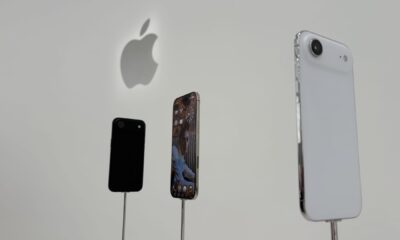
 Health4 months ago
Health4 months agoAnalysts Project Stronger Growth for Apple’s iPhone 17 Lineup
-

 Health4 months ago
Health4 months agoErin Bates Shares Recovery Update Following Sepsis Complications
-

 Technology5 months ago
Technology5 months agoDiscover How to Reverse Image Search Using ChatGPT Effortlessly
-

 Technology3 months ago
Technology3 months agoElectric Moto Influencer Surronster Arrested in Tijuana
-

 Technology5 months ago
Technology5 months agoMeta Initiates $60B AI Data Center Expansion, Starting in Ohio
-

 Technology2 months ago
Technology2 months agoDiscover 2025’s Top GPUs for Exceptional 4K Gaming Performance
-

 Technology5 months ago
Technology5 months agoRecovering a Suspended TikTok Account: A Step-by-Step Guide
-
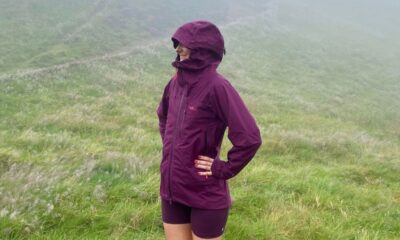
 Health5 months ago
Health5 months agoTested: Rab Firewall Mountain Jacket Survives Harsh Conditions
-

 Lifestyle5 months ago
Lifestyle5 months agoBelton Family Reunites After Daughter Survives Hill Country Floods

